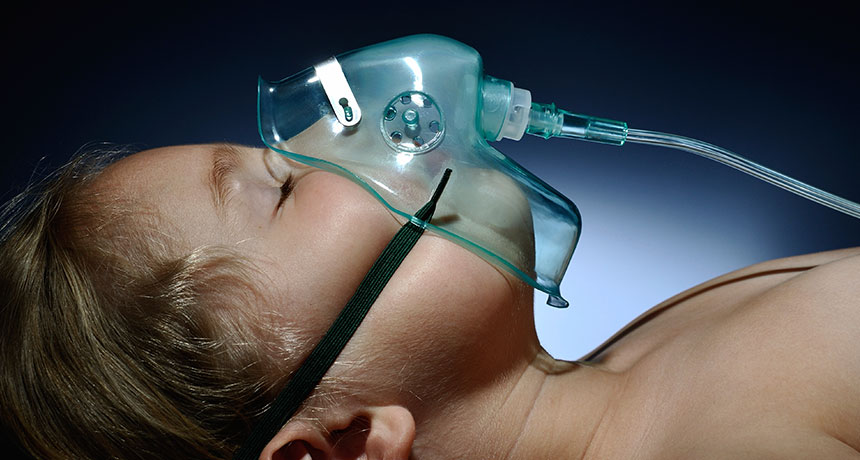Age affects brain’s response to anesthesia
Right dose may depend on differences between young and old

CASE FOR CAUTION Anesthetics hit young and old brains differently, studies suggest.
itsmejust/istockphoto
- More than 2 years ago
Anesthesia elicits different patterns of brain waves in the very young and very old, scientists have found. Understanding these distinctions may ultimately lead to brain monitors that could make surgery safer for these vulnerable patient populations.
These findings are groundbreaking, says neuroanesthesiologist Stacie Deiner of Icahn School of Medicine at Mount Sinai in New York City. The studies explain why brain monitors — typically geared for adults and currently used by some clinicians during surgery — may not work well for the young and the elderly, she says. “It’s a real back-to-the-drawing-board-type moment.”
The new results come largely from electroencephalograms (EEGs), which use electrodes on the scalp to detect various kinds of brain waves. Anesthesia-induced brain waves vary dramatically over a person’s life span, the studies show. “It’s a huge step forward in understanding how anesthetics work in children and the elderly,” says Patrick Purdon of Massachusetts General Hospital in Boston, who coauthored three studies describing some of the results in the July British Journal of Anaesthesia.
Monitors based on EEG signals gauge how anesthetized a person is by spitting out a single number between 0 and 100. But those monitors are simple and calibrated entirely on adult patients, Purdon says. The new results suggest why those monitors fail at the ends of the age spectrum, a deficit known to many anesthesiologists.
From birth until age 6, the strength of EEG signals starts off low and then increases to levels even higher than those of the average adult, Purdon and colleagues found. After age 6, brain wave strength then decreases before it plateaus at the adult level. In adults, a strong marker of being knocked out is a certain brain wave that shows up about 10 times a second in the front part of the brain. This anesthesia bellwether, called an alpha oscillation, is missing from babies younger than 1. “It just isn’t there,” Purdon says. “It doesn’t exist.”
At other end of the spectrum, elderly brains show big differences when compared with young adults. In the elderly, the anesthesia-induced alpha oscillation is weaker, with a slightly slower rhythm. What’s more, elderly brains were more likely to show brain waves consistent with a very deep stage of unconsciousness called burst suppression. Often observed in people in comas, burst suppression has been linked to postsurgical problems.
Searching for signals
Before age 1, a type of brain wave called an alpha oscillation (orange, top panel) is missing under sevoflurane anesthesia. This brain wave shows up at a frequency of 10 hertz. With age, the same signal starts to disappear (red, bottom panel).

Credit: O. Akeju et al/British Journal of Anaesthesia 2015 (top); P. Purdon et al/British Journal of Anaesthesia 2015 (bottom)
These differences in EEG measurements probably reflect underlying differences in the young and old brains, Purdon says. Young babies may not have developed some of the neural pathways that help generate particular brain waves. And brain changes that come with advanced age, such as reduced brain volume, might be behind the diminished signals in elderly brains.
Discovering these differences in brain responses to anesthesia might help doctors better calibrate their doses of the drugs, which is a big challenge, says pediatric anesthesiologist Andreas Loepke at the Cincinnati Children’s Hospital. Too little of the drug, and the patient might experience pain — and remember it later. Too high doses have been linked with poorer cognitive outcomes in both age groups. “We want to safely reduce the doses of the drugs we use,” Loepke says.
That tricky calculation may be aided by a deeper understanding of how anesthetics take hold of brains, both young and old, Purdon says. “If we try to reduce this [consciousness] to any single number, we’re going to fail,” he says. “But if we know the physiology, then we’re in business.”






